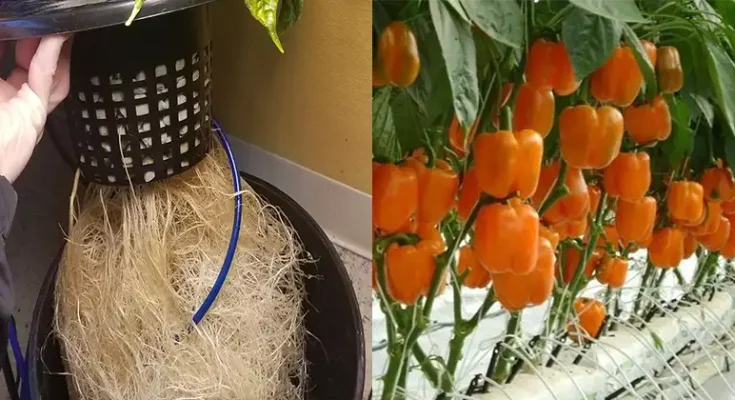Gardening has come a long way from traditional soil-based methods. Hydroponics, a method of growing plants without soil, has gained popularity due to its efficiency and sustainability. If you’re a fan of spicy and sweet peppers and want to try your hand at soilless gardening, this comprehensive guide will walk you through how to grow peppers without soil using hydroponics.
Hydroponics: What Is It?
Hydroponics is a method of growing plants in a nutrient-rich water solution without using soil. This technique provides plants with all the essential nutrients they need for growth, allowing for faster growth rates and better control over environmental factors.
Advantages of Growing Peppers Hydroponically
- Controlled Environment: Hydroponics allows you to control factors like light, temperature, and humidity, ensuring ideal conditions for pepper plants year-round.
- Increased Growth Rates: Soilless cultivation often results in faster growth and higher yields compared to traditional soil-based gardening.
- Reduced Space Requirement: Hydroponic systems are highly efficient and require less space compared to traditional soil gardens, making it an excellent choice for urban and indoor gardening.
- Reduced Pest and Disease Issues: Growing peppers without soil can help minimize the risk of pests and soil-borne diseases.
Getting Started with Hydroponic Pepper Gardening
- Choose Pepper Varieties: Begin by selecting the pepper varieties you want to grow. Varieties like bell peppers, jalapeños, and habaneros are popular choices.
- Hydroponic System Selection: There are several types of hydroponic systems to choose from, such as Deep Water Culture (DWC), Nutrient Film Technique (NFT), and Drip Systems. Select the one that best suits your space and needs.
- Obtain Necessary Equipment: Depending on the hydroponic system you choose, you’ll need equipment like grow lights, water pumps, air stones, and pH and EC meters.
- Create a Nutrient Solution: Hydroponic plants rely on nutrient-rich solutions for their growth. You can buy pre-mixed nutrient solutions or create your own using a nutrient formula suitable for pepper plants. Ensure that the pH and electrical conductivity (EC) levels are within the optimal range for peppers.
Planting and Maintenance
- Germination: Start by germinating pepper seeds in a seed tray or propagator. You can also purchase pepper seedlings if you prefer to skip the germination stage.
- Transplanting: Once the seedlings have grown their first true leaves, transplant them into your chosen hydroponic system. Ensure that the roots are properly submerged in the nutrient solution.
- Light and Temperature: Provide appropriate lighting for your peppers, as they require at least 12-14 hours of light per day. Maintain the temperature between 70-85°F (21-29°C) for optimal growth.
- Nutrient Maintenance: Regularly monitor and adjust the nutrient solution’s pH and EC levels to ensure your plants receive the right balance of nutrients.
- Pruning and Support: As your pepper plants grow, prune them to remove excess leaves and support the weight of the fruits with stakes or trellises.
- Pest and Disease Control: While hydroponics reduces the risk of some pests and diseases, it’s important to remain vigilant. Introduce beneficial insects if needed and follow integrated pest management (IPM) techniques.
Harvesting and Enjoying
Peppers typically take 75-90 days to mature, depending on the variety. You’ll know they’re ready to harvest when they reach the desired size and color. Use a sharp pair of scissors or pruning shears to cut the peppers from the plant, taking care not to damage the main stem.
Growing peppers without soil through hydroponics offers an exciting and efficient way to cultivate this popular vegetable. With careful planning and maintenance, you can enjoy a bountiful harvest of fresh, homegrown peppers year-round, no matter the climate or space constraints. This environmentally friendly and sustainable gardening method is not only rewarding but also a step toward the future of agriculture. So, why not give it a try and savor the fruits of your soilless labor? Happy gardening!



